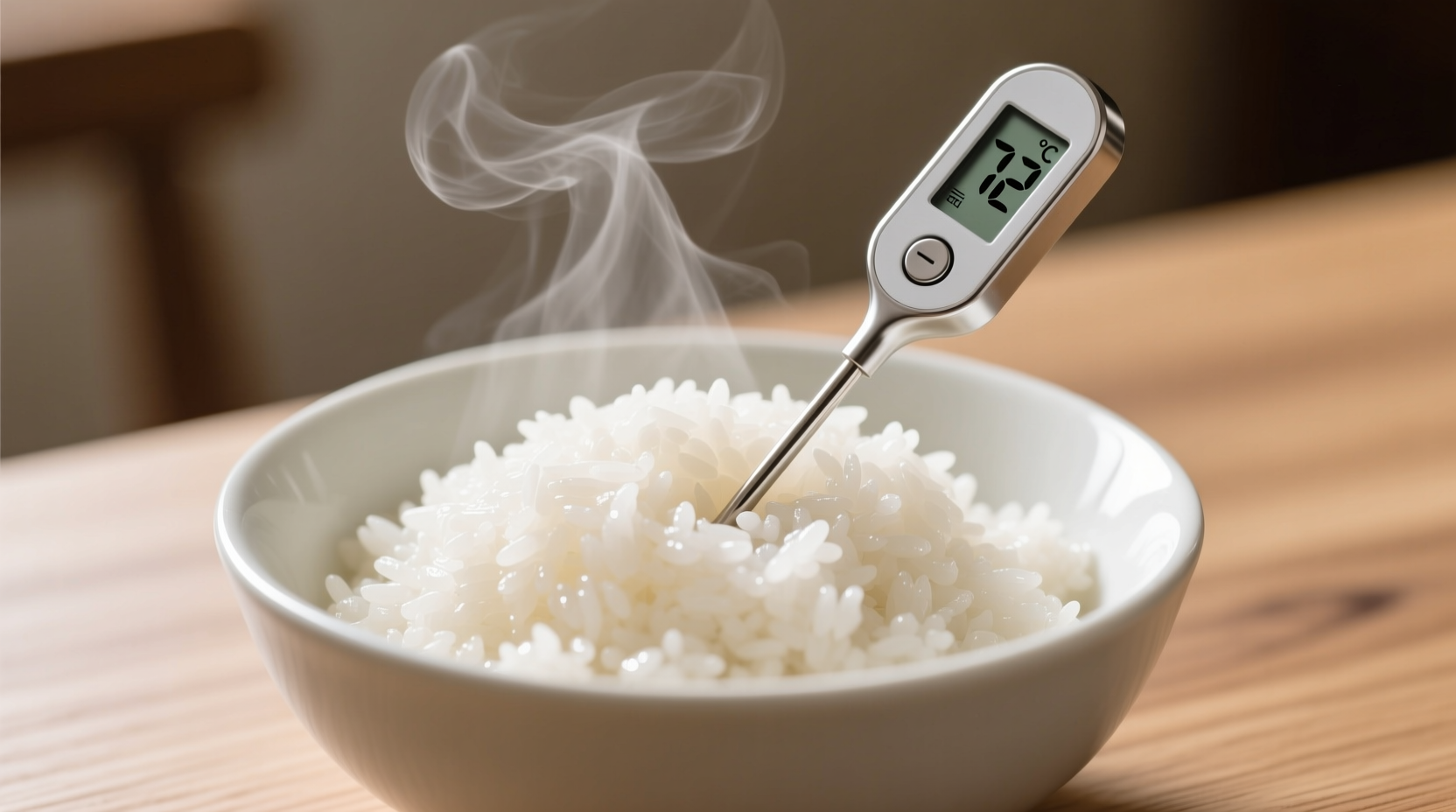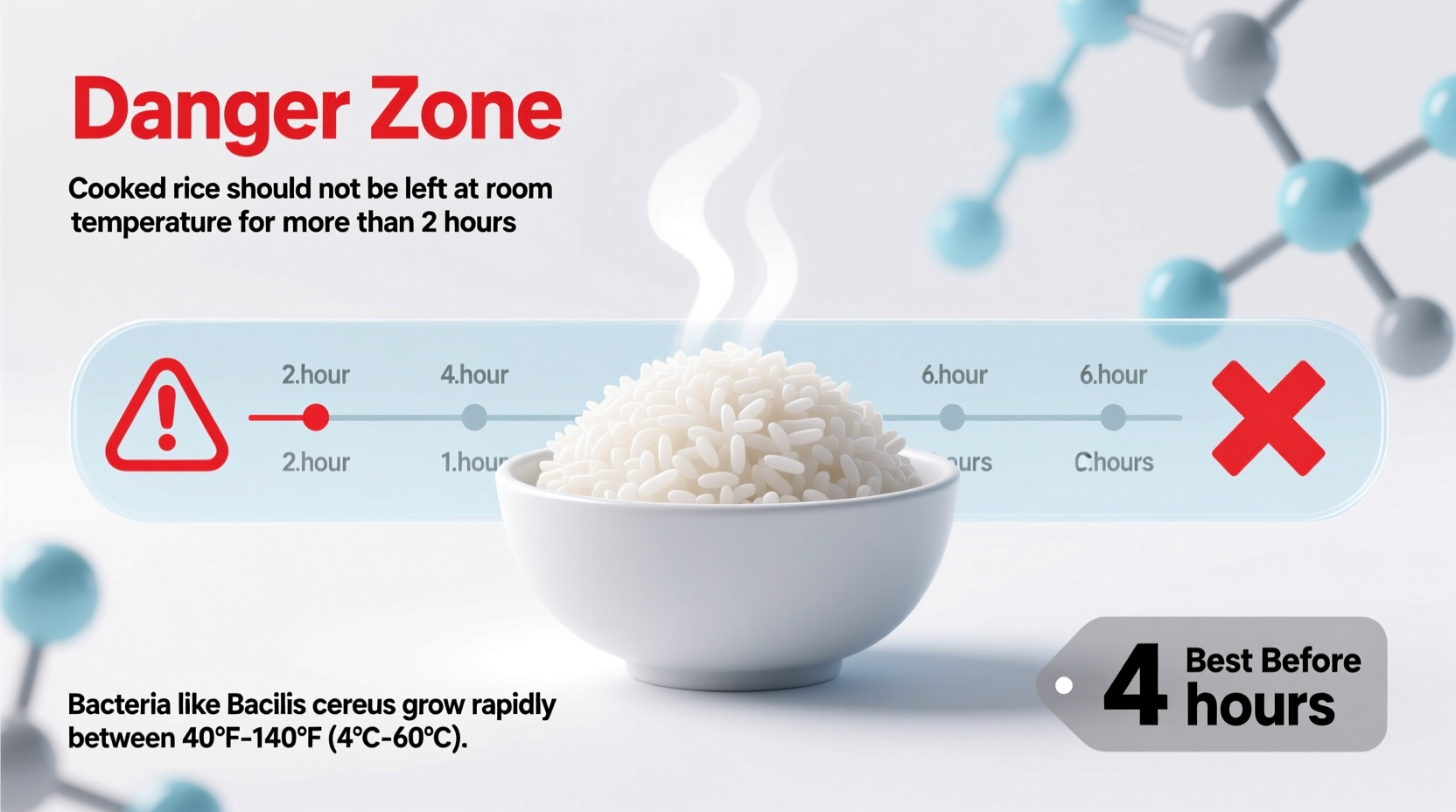That pot of rice left on the counter after dinner could make you seriously ill. Understanding exactly how long cooked rice remains safe at room temperature isn't just convenient knowledge—it's critical food safety information that protects you and your family from potentially severe foodborne illness.
The Hidden Danger in Your Rice Bowl
Cooked rice presents a unique food safety challenge most people don't anticipate. Unlike many leftovers, rice harbors Bacillus cereus spores that survive the cooking process. These resilient bacteria become active when rice cools to room temperature, multiplying rapidly and producing toxins that cause vomiting and diarrhea.
According to the FDA Food Code, cooked rice falls squarely in the temperature danger zone (40°F–140°F or 4°C–60°C) where bacteria multiply fastest. The critical 2-hour window isn't arbitrary—it's based on bacterial growth rates observed in controlled food safety studies.

Why Rice Is Different From Other Leftovers
While many cooked foods follow the same 2-hour rule, rice requires special attention for three scientific reasons:
- Surviving spores: Bacillus cereus forms heat-resistant spores that survive boiling temperatures
- Rapid multiplication: These bacteria double every 20 minutes at room temperature
- Heat-stable toxins: The emetic toxin produced causes vomiting and isn't destroyed by reheating
| Temperature Range | Safe Time Limit | Bacterial Growth Impact |
|---|---|---|
| Below 40°F (4°C) | 3-4 days | Growth halted |
| 40°F-90°F (4°C-32°C) | 2 hours maximum | Exponential growth |
| Above 90°F (32°C) | 1 hour maximum | Accelerated growth |
| Above 140°F (60°C) | Safe indefinitely | Growth prevented |
Real-World Scenarios: When Rice Becomes Risky
Food safety guidelines provide clear time limits, but real kitchen situations often create gray areas. Understanding these context boundaries helps you make better decisions:
- The buffet dilemma: At room temperature (70°F/21°C), rice becomes unsafe after 2 hours. In a hot kitchen (85°F/29°C), that window shrinks to 90 minutes.
- The forgotten pot: Rice left overnight (8+ hours) has likely reached dangerous toxin levels—discard it immediately.
- The warm climate challenge: In tropical environments where room temperature exceeds 90°F (32°C), cooked rice becomes unsafe in just 60 minutes.
Crucially, you cannot rely on sight, smell, or taste to detect Bacillus cereus contamination. By the time rice shows visible spoilage signs, toxin levels may already be dangerously high.
Practical Safety Strategies for Rice Handling
Follow these evidence-based techniques to keep your rice safe when refrigeration isn't immediately available:
- Rapid cooling method: Spread cooked rice in a thin layer on a clean baking sheet. This increases surface area, allowing rice to cool from 140°F to 70°F within 1 hour—critical for preventing bacterial growth.
- Hot holding solution: Keep rice above 140°F (60°C) in a slow cooker or insulated container if serving buffet-style for extended periods.
- Portion control approach: Divide large batches into smaller containers immediately after cooking. Smaller portions cool faster, reducing time spent in the danger zone.
- Refrigeration timing: Place cooled rice in the refrigerator within the 2-hour window. Store in shallow containers no deeper than 2 inches for optimal cooling.
What Happens When You Eat Spoiled Rice
Consuming rice contaminated with Bacillus cereus typically causes symptoms within 1-6 hours. The emetic (vomiting) type toxin produces:
- Nausea and violent vomiting
- Abdominal cramps
- Symptoms usually lasting 6-24 hours
Unlike many foodborne illnesses, reheating contaminated rice won't make it safe. The emetic toxin remains stable even at boiling temperatures. According to the Centers for Disease Control and Prevention, approximately 63,000 cases of Bacillus cereus food poisoning occur annually in the United States, with rice dishes being the most common culprit.
Special Considerations for Vulnerable Populations
Certain groups face higher risks from rice-related food poisoning:
- Young children: Developing immune systems struggle to combat toxins
- Older adults: Reduced stomach acid allows more bacteria to survive
- Immunocompromised individuals: Including those undergoing chemotherapy or with chronic illnesses
- Pregnant women: Increased vulnerability to foodborne pathogens
For these high-risk groups, strict adherence to the 2-hour rule is essential. When in doubt about rice safety, follow the food safety maxim: "When uncertain, throw it out."











 浙公网安备
33010002000092号
浙公网安备
33010002000092号 浙B2-20120091-4
浙B2-20120091-4